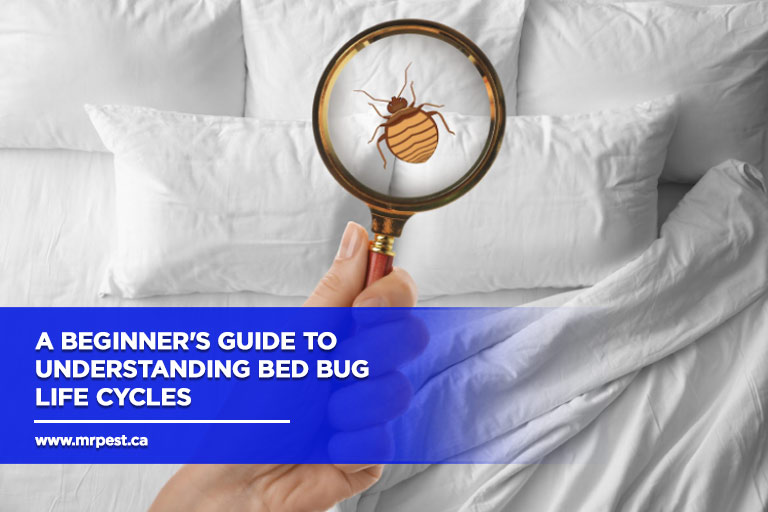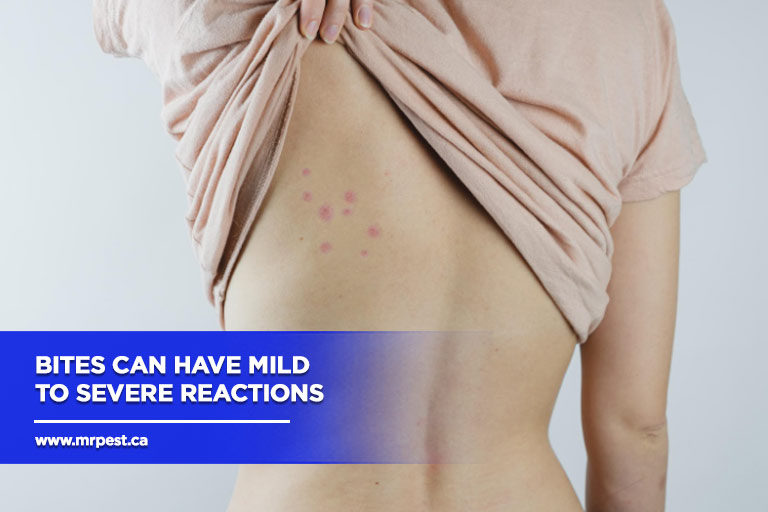Bed bugs are prolific breeders, with females laying anywhere from 200 to 500 eggs throughout their lifetime, according to Global News. These pests are also incredibly resilient, capable of surviving for months without feeding, which makes controlling them especially challenging.
Understanding their life cycle is essential in combating these persistent invaders effectively. By learning about their development (from eggs to adults) you’ll be better equipped to identify infestations early and take action before they spread.
Key Stages of a Bed Bug Life Cycle
Bed bugs progress through 3 primary stages of development: egg, nymph, and adult. The nymph stage is further broken down into 5 sub-stages, with each stage requiring a blood meal to move forward. Understanding these phases can help identify infestations early and ensure effective control.
Egg Stage
The bed bug life cycle begins with tiny, white eggs that are laid in clusters in hidden areas like mattress seams or wall cracks. These eggs hatch within 6 to 10 days, marking the start of the infestation.
Nymph Stage
The nymph stage is the longest phase in the bed bug life cycle, and it is divided into five sub-stages. As they grow, nymphs moult after each blood meal to progress to the next stage:
- First Instar – Newly hatched, translucent, and very small.
- Second Instar – Slightly larger and still translucent but darkens after feeding.
- Third Instar – Grows larger and more visible, with increased feeding frequency.
- Fourth Instar – Near-adult size, with noticeable darkening after meals.
- Fifth Instar – Just before adulthood, visibly larger and reddish-brown after feeding.
Adult Stage
Fully grown adult bed bugs are about the size of an apple seed, reddish-brown, and capable of reproducing after feeding. Adults can live for several months without a blood meal and are responsible for laying hundreds of eggs, leading to rapid infestations.
Signs to Look for at Each Bed Bug Life Stage

Identifying bed bugs at various stages of their life cycle is crucial for effective management and prevention. Each stage leaves distinct signs that can help you pinpoint an infestation early. Here’s what to look for:
Egg Stage
- Locations: Check hidden areas such as mattress seams, bed frames, baseboards, and behind wallpaper where eggs are commonly laid.
- Signs: Look for small, white, oval-shaped eggs or empty egg casings (shells left behind after hatching) in these areas.
Nymph Stage
- Signs: Look for tiny, moving insects around the bed, in mattress seams, and along baseboards. Shed skins (exoskeletons) from moulting nymphs may also be found in infested areas.
Adult Stage
- Signs: Adults are often found hiding in cracks and crevices near where people sleep. You may also notice rusty red or brown stains on bedding and mattresses, which are caused by bed bugs being crushed or their excrement.
Effective Prevention Tips Based on Life Cycle Knowledge
Understanding the bed bug life cycle helps in implementing effective prevention strategies. By addressing the specific needs and behaviours associated with each stage, you can significantly reduce the risk of an infestation. Here are some practical tips:
Regular Inspections
- Routine Checks: Conduct regular inspections of your sleeping areas, including mattresses, bed frames, and furniture. Look for signs of bed bugs such as eggs, shed skins, or rusty stains.
- Professional Help: Consider scheduling periodic inspections by a pest control professional, especially if you live in high-risk areas like Barrie or Orillia, or if you travel frequently.
Proper Cleaning and Maintenance
- Vacuuming: Regularly vacuum carpets, rugs, and upholstery to remove bed bugs and their eggs. Dispose of the vacuum bag immediately to prevent re-infestation.
- Washing: Wash and dry bedding, linens, and clothing on high heat to kill bed bugs and their eggs.
Encase Mattresses and Box Springs
- Protective Covers: Use bed bug-proof encasements on mattresses and box springs to trap any bed bugs inside and prevent new ones from entering. These encasements should be inspected regularly for signs of damage.
Seal Cracks and Crevices
- Home Repairs: Seal gaps in walls, around baseboards, and other potential entry points to limit bed bugs’ hiding places and movement. This can help reduce the likelihood of an infestation spreading.
Be Cautious When Traveling
- Luggage Care: Inspect luggage and hotel rooms for signs of bed bugs before unpacking. Store your luggage on luggage racks away from the bed and avoid placing it on the floor or bed.
- Immediate Action: If you suspect exposure to bed bugs while travelling, launder your clothing immediately upon return and inspect your belongings thoroughly.
Staying vigilant and proactive in your approach can help keep your living spaces bed bug-free, whether you’re dealing with bed bugs in Barrie, Orillia, or elsewhere.
Possible Health Dangers of Bed Bug Bites

Bed bug bites are not just a nuisance; they can pose various health risks and cause discomfort. Understanding these potential health dangers can help you address an infestation more effectively and seek appropriate medical care if needed.
Allergic Reactions
- Mild Reactions: Some individuals may experience minor allergic reactions to bed bug bites, including redness, itching, and swelling at the bite site.
- Severe Reactions: In more severe cases, allergic reactions can lead to intense itching, hives, and even systemic reactions like anaphylaxis, though this is rare.
Secondary Infections
- Scratching Risks: Constant scratching of bed bug bites can break the skin, creating an entry point for bacteria. This can lead to secondary infections such as impetigo, cellulitis, or abscesses.
- Treatment: It’s important to keep bite areas clean and avoid scratching. Seek medical advice if you notice signs of infection, such as increased redness, warmth, or pus.
Psychological Effects
- Sleep Disturbances: Bed bug bites often cause discomfort and itching, which can lead to disturbed sleep and insomnia. This can affect overall health and well-being.
- Anxiety and Stress: The presence of bed bugs and the itching from their bites can contribute to anxiety, stress, and decreased quality of life. In severe cases, it can lead to depression or other mental health concerns.
Potential for Other Diseases
- Disease Transmission: While bed bugs are not known to transmit diseases directly, their bites can sometimes cause complications that may indirectly lead to health issues. Maintaining good hygiene and promptly addressing any infections or allergic reactions can mitigate these risks.
Prevention and Treatment
- Over-the-Counter Remedies: Use anti-itch creams or antihistamines to relieve itching and discomfort from bites.
- Medical Attention: Consult a healthcare provider if you experience severe reactions, secondary infections, or persistent symptoms. They can recommend appropriate treatments or refer you to a specialist if needed.
Stay Vigilant and Pest-Free
Understanding the bed bug life cycle and recognizing the signs of an infestation are crucial for maintaining a bed bug-free environment. If you’re dealing with bed bugs in Orillia and Barrie or need expert help, don’t hesitate to reach out to Mr Pest Control. Call us today at (705) 739-7378 for effective solutions and peace of mind.


